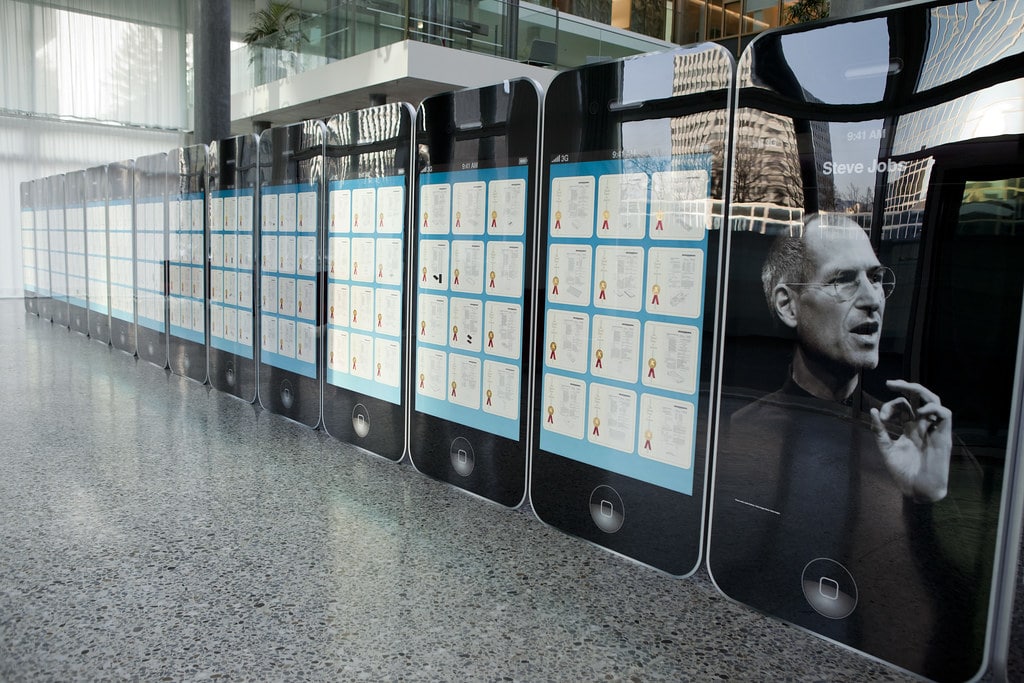A design patent legally protects the design embodied in or applied to an article of manufacture, but NOT the article of manufacture itself. That is, what is patentable is the design for an article including surface ornamental features, configuration and three-dimensional shape (if the shape is not functional). Essentially, design is about the visual characteristics of an article of manufacture.
As a recent example that will be very familiar to consumers, Apple, Inc. received at least three design patents for its original smartphone that protected its black rectangular shape with rounded corners, its raised edges and its arrangement (and coloring) of 16 icons and the “home” button on the display screen. Apple’s design patents eventually sparked massive patent infringement litigation with Samsung when Samsung began manufacturing and selling a smartphone with similar design features. The litigation has been ongoing for more than a decade and, at the most recent trial, the jury returned a verdict for Apple and awarded $533 million dollars in damages against Samsung for infringement of Apple’s patents.
By contrast, a utility patent protects the way an article of manufacture is used and functions. A utility patent can also be issued for new methods and processes of manufacture. New inventions may be patentable for both design and utility aspects and, thus, both types of patents may be obtained at the same time for the same invention. Both types of patents afford legally separate protections. That is, infringement litigation can be initiated for both types of patents in the same litigation. Indeed, Apple’s litigation against Samsung included allegations of infringement against its utility patents for the smartphone in addition to the claimed infringement against its design patents. Note that, since design patents must attach to something physical, no design patents can be obtained for inventions involving processes or methods.
There are several other important distinctions between between design and utility patents which can be summarized as follows:
- The term of a utility patent is 20 years; the term of a design patent is 15 years
- Based on the filing of a foreign patent application, priority can be claimed for up to one year for utility patents, but only for six months for a design patent
- The US Patent Office charges lesser fees for a design patent application
- The US Patent Office requires the payment of maintenance fees for utility patents, but not for design patents
- Design patents are generally granted in about half the time it takes for a utility patent to be granted
- Design patent may have only one claim; utility patents can — and usually do — have multiple claims; this matters because separate design elements for a single article of manufacture will require separate design patent applications
- Provisional patent applications are available for utility patents, but not for design patents
- Utility patent applications are published by the US Patent Office; design patent applications are not
- Certain Patent Office internal procedural rules are different; Continued Prosecution Application procedures must be used for design patent applications whereas Requests for Continued Examination are used for utility and plant patent applications
The foregoing differences between design and utility patents are important. But there is another crucial difference that deserves emphasis: the allowable measure of damages for infringement. Under US patent law, if patent infringement is proven, the owner of the patent is entitled to money damage that, by statute, can be no “less than a reasonable royalty.” See 35 U.S. Code § 284. This is true for both design and utility patents. However, design patents have an additional remedy: profit disgorgement by the infringer. See 35 U.S. Code § 289. Profit disgorgement means that the infringer must disgorge — pay over to the patent owner — all of the profits that the infringer made by infringing on the patent. As a measure of damages, profit disgorgement can generate massive verdicts. Indeed, this is what led to Apple obtaining a verdict of $533 million at its most recent trial with Samsung.
Contact Revision Legal
For more information or if you have an invention or design that you want to patent, contact the patent lawyers at Revision Legal at 231-714-0100.




